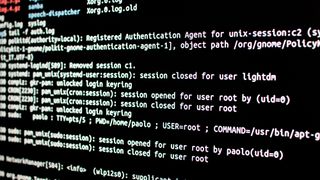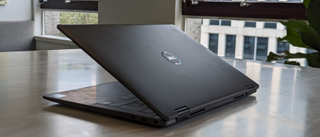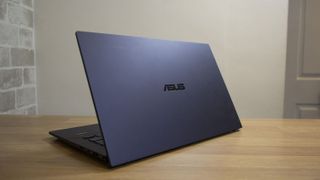Best laptops for programming and coding in 2024
There are so many factors to consider when choosing the best laptops for programming and coding – here are our top picks

There are several factors that come into play when choosing the best laptops for programming or coding. Programmers, software developers, and engineers are professions that depend greatly on their laptops. From keyboard and port options to processing power and the type of operating system, there are multiple facets to consider.
However, the most important quality when searching for the best laptop for programming and coding is its ability to make work not feel like work. This means that the perfect device needs to combine all the most helpful features with being a pure pleasure to use – without constant lagging, heavy lifting, or bad design.
To help you navigate the market, we've collated some of the best machines available, based on the most common programming, coding, software development, and engineering needs.
What to look for in a programming laptop
Display size
The size of the display will make an enormous difference to certain developers. More specifically, it will matter more to those with smaller external displays, or no external displays at all.
If using a laptop, most programmers opt for at least one external monitor in addition to their laptop’s built-in screen for maximum productivity. However, some programmers own multiple external displays and don’t need to have their laptop open at all, having it simply act more like a mobile tower computer rather than an all-in-one workhorse.
Laptops typically come in sizes ranging from 13 inches to 16 inches, but the short answer is bigger is better in nearly all cases. Looking at multiple lines of code between project files can be tricky on smaller screens and running a simulator on the same window can make for an uncomfortable experience if coding just on the laptop itself.
If you go for a smaller display, make sure you have a good amount of screen estate in your overall set-up, such as one or two external 27-inch displays. They don’t need to be expensive, 4K panels – programming values space over resolution.
Type of keyboard
There are so many factors that differentiate one keyboard from the next, and multiple contenders for the best business keyboard. The type of key switch, size of the keyboard, and how much you can customise it also come into play so, above all else, it’s worth getting hands-on with a variety of keyboards before you buy to find your favourite type of configuration.

What’s more objective, though, is the need for a comfortably sized keyboard. Key switches come in myriad different styles but keyboard sizes typically have just the two: keyboards with number pads and those without them. You will often find the number pads on laptop keyboards go unused in programming and they can, in certain installations, offset the keyboard away from the centre of the display, which can be off-putting if using the laptop’s keyboard to type regularly, rather than an external board.
Key switches also vary significantly between laptops and keyboard manufacturers. Membrane keys are most commonly found on less expensive office keyboards while mechanical keys come in different sensitivities and levels of tactile and audible feedback. The latter are trendier but are found less commonly on laptops and need to be thoroughly tested before buying as they can be an acquired taste.
Processing power and storage
Software or web development isn’t typically the most compute-heavy workload when compared to job functions that involve things like video editing and running data analyses, for example. Regardless, the likelihood of having multiple applications running at the same time, as is the case in most office environments, will demand high-performance hardware such as CPUs and RAM to get the job done efficiently.
It’s also worth considering the amount of storage space you will need and the type of storage required. We recommend going for as much storage as you can afford and choosing solid state drives (SSDs) over traditional hard disk drives (HDDs).
SSDs have historically been much more expensive than HDDs but prices have dropped considerably in recent years. Forking out for an SSD will allow you to access the files you need at lightning speed compared to the slower read/write speeds of HDDs.
The best laptops for programming
LG Gram Superslim
Best lightweight laptop for programmers

| Pros | Cons |
|---|---|
| Lightweight | Expensive |
| Fast i7 chip | Row 1 - Cell 1 |
| Long battery life | Row 2 - Cell 1 |
The LG Gram Superslim is everything a laptop should be; powerful and portable. At 990g the device is a lightweight backpack filler, but it isn't a weakling when it comes to computational power.
Some may find the travel on the Gram Superslim too shallow, but there is a distinct feel to each keypress and only a subtle noise from each keystroke -- a good quality for working in public places. And with two backlight levels (high or low) you have a machine capable of nighttime coding.
And the Superslim can last into a long night shift, with its impressive battery. Under our looped video test, the LG Gram lasted 11hrs and 53 minutes – almost 16 hours when left idling. That outstripes MacBooks and all sizes and models of XPS. However, the weight of the device might still hold the biggest appeal. At just 990g, the Superslim is a portable powerhouse.
| CPU | 12-core (4 P-cores, 8 E-cores) Intel Core i7-1360P processor |
| RAM | 16GB LPDDR5-6000 RAM |
| Screen | 15.6in 60Hz AMOLED non-touch panel, 1,920 x 1,080 resolution |
| Ports | 3 x USB-C (2 x Thunderbolt 4/USB 4, 1 x USB 3.2 Gen 1) |
| Weight | 990g |
Price when reviewed: $1,800
Read our full LG Gram Superslim review for more information.
Acer Chromebook Plus 514
Best budget laptop for programmers

| Pros | Cons |
|---|---|
| Solid performance | Dull screen |
| Great keyboard and trackpad | Row 1 - Cell 1 |
| Useful Chromebook Plus features | Row 2 - Cell 1 |
Acer's Chromebook Plus 514 is one of the first of a cohort of devices bearing Google's new 'Plus' designation which has been created to ensure a more premium standard across Chromebooks.
The 514 is one of only two to be powered by AMD's new Ryzen 3 7320C chip. If you can get over the low build quality and sup par brightness level of the screen, you should be more than happy with the performance here. Its Geekbench 6 scores suggest a budget machine – 1,169 for single-core and 3,571 for multi-core – and they compare poorly with other models, like the Acer Chromebook Spin 714 or the Vibe CX34. But these differences are not replicated in real-world usage and there is a significant price drop from those machines and the 514.
What's more, the backlit keyboard is superb; with five levels of brightness adjustment, big keys that are easy to find without looking, and a soft click and decent travel. It's effortless to type on and perfect for coders. Battery life isn't superb, but it will see you through a standard office shift – which is reasonable for a sub-£400 machine.
| CPU | AMD Ryzen 3 7320C |
| RAM | 8GB |
| Screen | 14-in, 16:10, 1920 x 1200 |
| Ports | 2 x USB 3.2 Gen 2 Type-C ports, 1 x HDMI output, 1 x USB 3.2 Gen 1 Type-A port, 3.5mm audio |
| Weight | 1.45kg |
Price when reviewed: $400
Read our full Acer Chromebook Plus 514 review for more information.
Dell Latitude 9440 2-in-1
Best allrounder for coders

| Pros | Cons |
|---|---|
| Premium build | Expensive |
| Quality keyboard | Limited ports |
| Decent battery life | Row 2 - Cell 1 |
Businesses shopping for Dell laptops more often than not land on a Latitude device. Regardless of what variation, they are dependable workhorses and the 9440 2-in-1 is no different. From its pleasingly tactile keyboard to its speedy i7 processor, the Latitude is a strong all-rounder.
The Intel i7-1365U processor is a particular boon here; in Geekbench 6 the 9440 achieved a multi-core score of 8,930, just piping the XPS 15 (8,707). The M1 MacBook was too strong for comparison (12,149), but the pricing here is more SMB-friendly and there's more holistic quality to the Latitude that suits businesses.
For example, in our looped video test, the 9440's battery lasted 11hrs and 10mins, slightly better than the MacBook. This holds up well when remote as well as the Latitude has the staying power to keep you working for hours in places that have no plug sockets.
The price for the Latitude 9440 is admittedly high – businesses should expect a discounted fee when buying in bulk – but there is a premium feel to the machine that makes it worthwhile. It is a stylish and capable laptop – shockingly portably too – and an ideal all-rounder for those in software development roles.
| CPU | Intel® Core™ i7-1365U Processor 1.8 GHz (12MB Cache, up to 5.2 GHz, 10 cores, 12 Threads) |
| RAM | 32 GB, LPDDR5 |
| Screen | 14.0-inch, QHD+(2560x1600), 60Hz refresh rate, 500nits, touchscreen |
| Ports | 1x Thunderbolt™4 with Power Delivery & DisplayPort (USB Type-C), 1x 3.5mm Combo Audio Jack |
| Weight | 1.54 kg (3.38 lbs) |
Price when reviewed: $2,367
Read our full Dell Latitude 9440 2-in-1 review for more information.
Asus Chromebook CX9 (CX9400CE)
Best Chromebook for coding

| Pros | Cons |
|---|---|
| Stylish, strong and light chassis | Mediocre battery life |
| Great keyboard | Expensive |
| High-quality screen | Row 2 - Cell 1 |
Chromebooks aren't often the first option that's likely to spring to mind for developers looking for a work machine, but increasing Linux support in ChromeOS is making it a more and more feasible option. If you are looking for a Chromebook for coding, then you can do much, much worse than the Asus Chromebook CX9.
Being among the more expensive Chromebooks available on the market, you would expect strong performance and it does indeed deliver, but not in excess. The performance is solid, but there are other far more powerful laptops on the market that are worth considering if pace is your priority. That said, in our tests, we ran into no issues running multiple applications concurrently and what's more, the CX9 runs quietly and cool.
The battery life on the CX9 is fine. It beats a lot of the high-powered machines in this list but not by a considerable margin with a score of 10hrs 47mins, and many programmers will favour power over battery life given the task at hand. Still, it's a highly capable device that delivers decent performance, all bundled into a strong and light chassis.
It's got a good keyboard, too, with snappy and fast chicklet keys that have plenty of travel alongside a consistent typing action. A little more travel here than on the MacBook Pro and the latest Dell XPS. And unlike a number of small laptops that have keyboards that feel soft or hollow, the CX9's excellent keyboard is ideal for hours of typing. What's more, the ErgoLift hinge tilts the keyboard towards the user, which makes the typing position more comfortable.
The trackpad is fairly wide and its range is good. It's accurate, though it is a little tough to click. There is no numberpad, which is something of a con for programmers, though you can overlay a virtual numberpad over the trackpad, but this stop-gap solution doesn't always register keypresses and is unsatisfying to use. If you do lots of work with figures or data, you'd should look for a machine with a proper numberpad. But if it has to be a Chromebook, then make it this one.
| CPU | Intel Core i7-1165G7 |
| RAM | 16GB |
| Screen | 14in 1,920 x 1,080 |
| Dimensions | 322 x 205 x 16mm |
| Weight | 1.15kg |
Price when reviewed: £1,084
Read our full Asus Chromebook CX9 (CX9400CE) review for more information.
Lenovo ThinkPad X1 Titanium Yoga
Best for long periods of typing

| Pros | Cons |
|---|---|
| Slim, light and sturdy chassis | Pricier than competitors |
| Bright, useful touchscreen | Poor physical connectivity |
| Crisp, satisfying keyboard | Disappointing trackpad |
This list wouldn't be complete without a ThinkPad - the business notebook. This isn't simply a check-box inclusion, as the keyboards on ThinkPads have traditionally been a delight to use and the X1 Titanium Yoga's is no exception.
The breed of users who seek out excellent typing experiences will appreciate the fast, crisp buttons on the X1 Titanium Yoga's keyboard, and the actuation is so fast the keys practically bounce back after being pressed. The device is slim and light too while keeping a sturdy chassis. Weighing in at just over 1kg, it's among the lightest in its product category and remained quiet and cool throughout our time with it.
We must say that the X1 Titanium Yoga's performance leaves much to be desired, and the trackpad that sits under the fantastic keyboard disappointed with a rough coating and required too much force to click. For this reason, programmers may want to opt for something a little more capable of heavy workloads.
| CPU | Intel Core i7-1160G7 |
| RAM | 16GB |
| Screen | 13.5in 2,256 x 1,504 touchscreen |
| Dimensions | 298 x 232 x 11.5mm |
| Weight | 1.15kg |
Price when reviewed: £1,814 exc VAT
Read our full Lenovo ThinkPad X1 Titanium Yoga review for more information.
Best laptops for programming FAQs
Do I need a large screen for programming?
Bigger isn’t always better, but when it comes to coding, a large amount of screen real estate can be incredibly useful. Not only does it allow you to see more lines of code at once without endless scrolling, but it’s also great for multitasking. You can keep your chosen IDE open in one window, and StackOverflow right alongside without having to waste time switching back and forth.
Many programmers find themselves at a desk for long periods of time, and for this some favour mutliple monitor setups. In this case, the importance of screen size gives way to the quality of the display itself as windows can be spread across multiple monitors as needed. Setups such as this may also negate the need for lighter laptops, or better keyboards, as laptops are typically mounted on a stand and connected to an external keyboard and mouse.
On the other hand, if you’re on the hunt for a laptop to be carried on your commute, larger screens could contribute to an unwelcome addition in weight. For example, a 15in laptop will typically pack more heft than a 13in and the same is true for laptops with larger batteries.
In general, we feel a 14in or 15in laptop represents the optimum balance between portability and screen size for most developers.
Should I buy a laptop with a numberpad for programming?
Physical number pads offer some extra functionality for laptop users, but they can be a waste of space for some. It's generally the case that when you're using a standard keyboard, you will either use it all the time, or never touch it, depending on your tastes.
Physical number pads are sought after by some users, but they are often little more than a waste of keyboard space. Although they have their uses, such as for typing special symbols or for faster number entry, these are rarely used by many users and as such don’t outweigh the significant size and weight disadvantages associated with including a number pad.
Though no laptop on this list features a number pad, a sign of their increasing rarity on modern laptops, there are still some business laptops that come equiped with a number pad. For those for whom they are a necessity, external number pads can be purchased to add their functionality to any laptop.
Which OS is best for programming?
Some developers have grown to prefer Apple MacBooks for programming, for a number of clear reasons. The entire range packs a punch in terms of performance, the UNIX-based macOS pairs nicely with a number of different programming languages, and they are among the most aesthetically pleasing laptops on the market.
However, macOS is by no means the only option when it comes to programming. Microsoft Windows is the most widely used operating system in the world, and since the addition of Windows Subsystem for Linux, its versatility has increased dramatically. Finally, there’s Linux itself, which – despite the ever-present spectre of compatibility issues – remains a popular choice for developers looking to completely immerse themselves in the world of programming. Linux comes with a range of distributions or ‘distros’, and the best Linux distros make welcome environments for programmers.
To get the best overall coverage, our advice would be to pick up a Windows device, and either dual-boot Linux onto it, or use the inbuilt Linux tooling to customise your workflows - unless you’re an Apple-specific developer, in which case a MacBook could be your best bet.
How we test laptops for programming
Like every laptop we review, the units on this list have been put through a number of tests to measure their technical performance across a range of categories. For display testing, we use a colorimeter and the open source DisplayCal measurement software. This allows us to check the contrast ratio and maximum brightness, as well as the colour accuracy and reproduction.
This is done by testing what percentage of a given colour gamut the display can represent, as well as measuring the average Delta-E rating, showing how closely those colours match the target hue. We generally test against the sRGB colour gamut, but for certain laptops, we may also test against the DCI-P3 and Adobe RGB gamuts, if the display has been specifically calibrated for them.
To measure a machine’s performance, we use a suite of custom benchmark tests, which simulate a series of different workloads: a single-core image conversion test, a multi-core video encoding job and a stress test where both the previous tasks are run simultaneously while also playing back a video.
Each test gives us an individual result, which are then combined to form an overall score. This is usually the main result we’ll quote as part of a review, but we’ll also discuss individual test results where relevant. These test results are supported by Geekbench 5’s single and multi-core benchmark tests to identify any anomalous results, as well as AS SSD’s storage speed benchmarks.
Battery life is another important area of testing, which is measured by playing a looped video in airplane mode with the screen set to a consistent brightness level, and measuring how long it takes the battery to deplete. This allows us to compare battery life between machines in a consistent manner, but doesn’t necessarily give an indication of real-world longevity, so for this we track the battery life over the course of our testing period, measuring how long it lasts when used for real-world workloads of varying intensities.
Get the ITPro. daily newsletter
Receive our latest news, industry updates, featured resources and more. Sign up today to receive our FREE report on AI cyber crime & security - newly updated for 2024.

Connor Jones has been at the forefront of global cyber security news coverage for the past few years, breaking developments on major stories such as LockBit’s ransomware attack on Royal Mail International, and many others. He has also made sporadic appearances on the ITPro Podcast discussing topics from home desk setups all the way to hacking systems using prosthetic limbs. He has a master’s degree in Magazine Journalism from the University of Sheffield, and has previously written for the likes of Red Bull Esports and UNILAD tech during his career that started in 2015.




